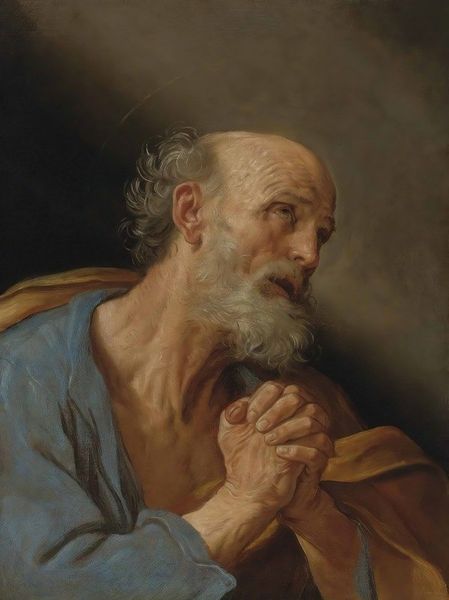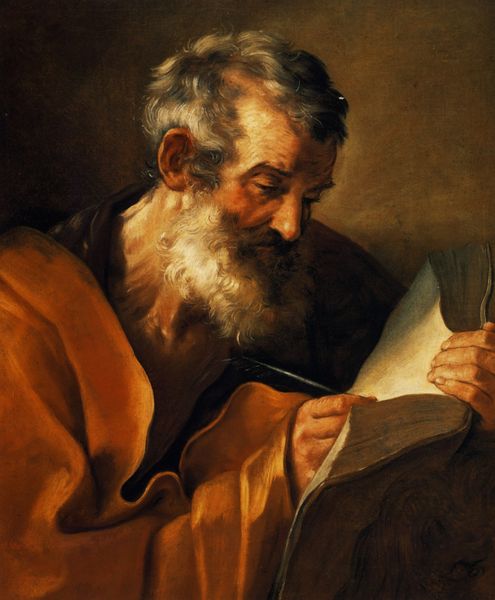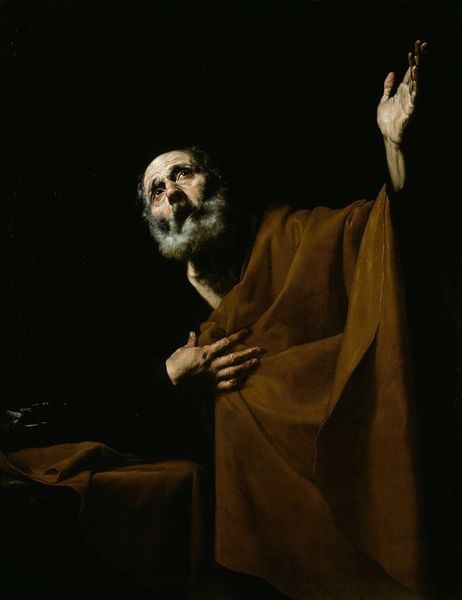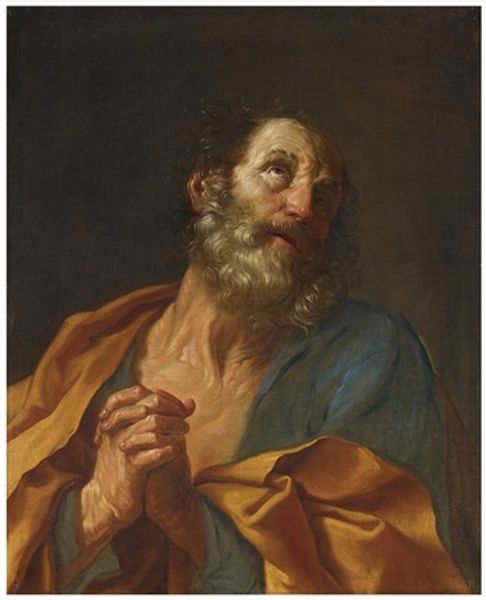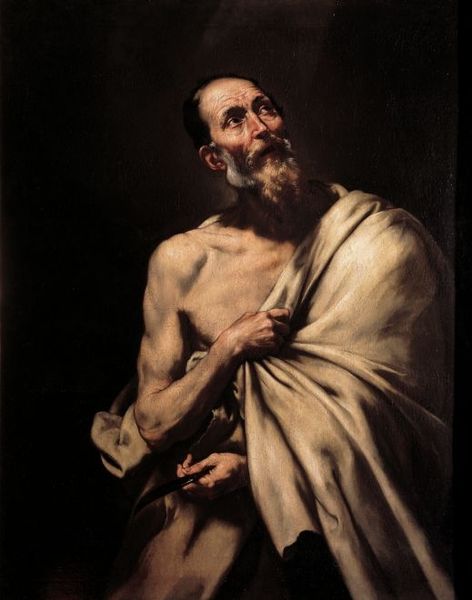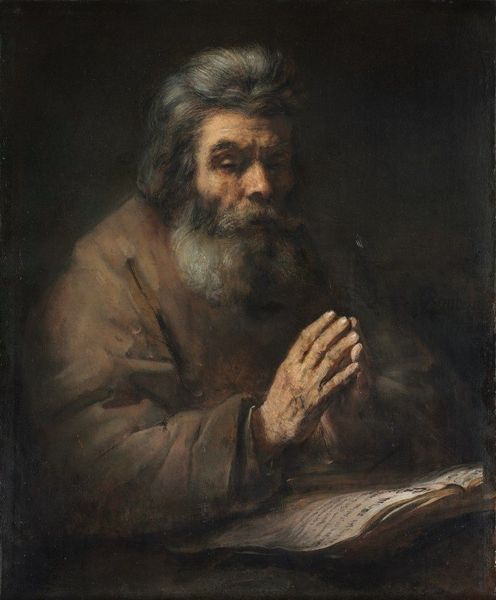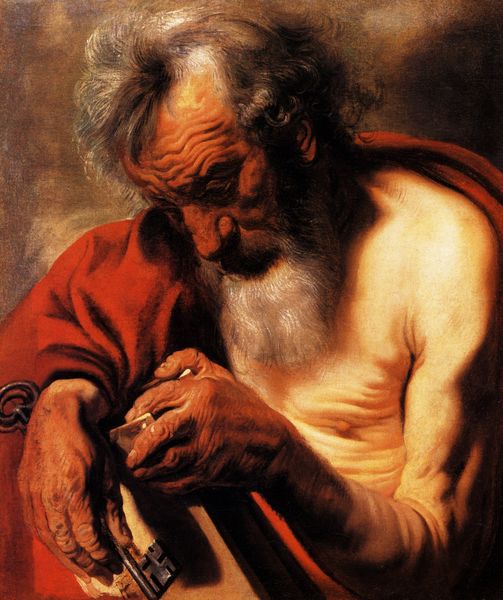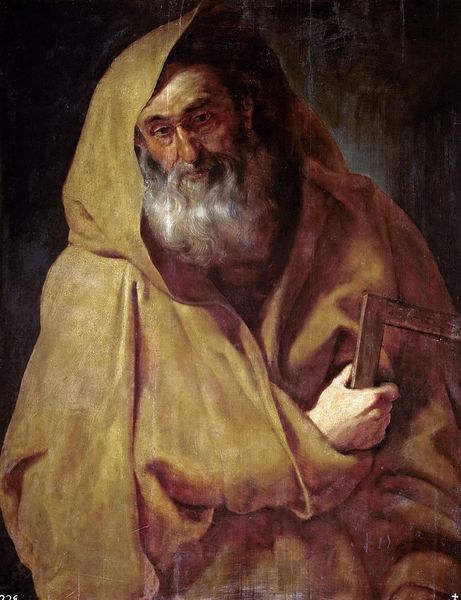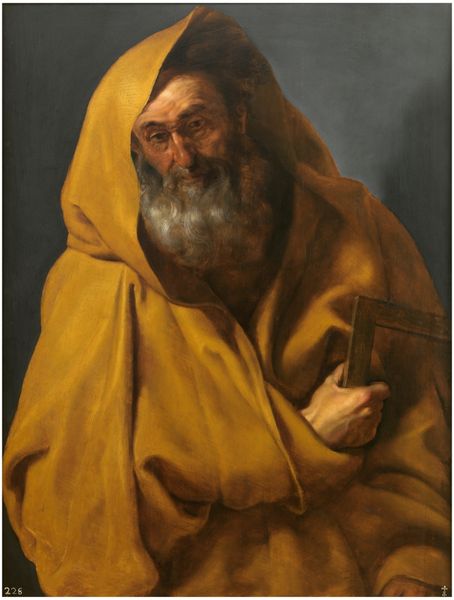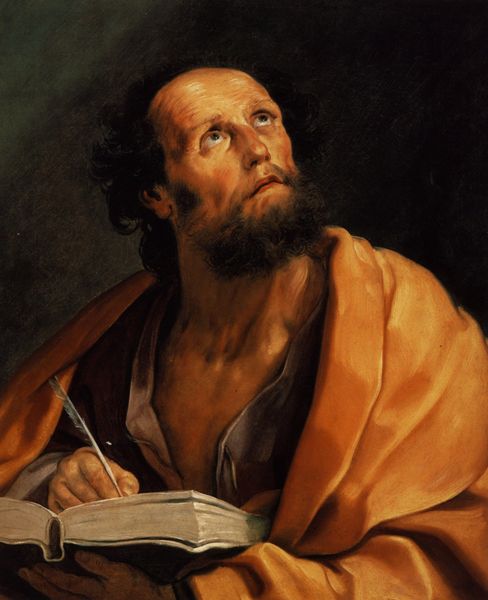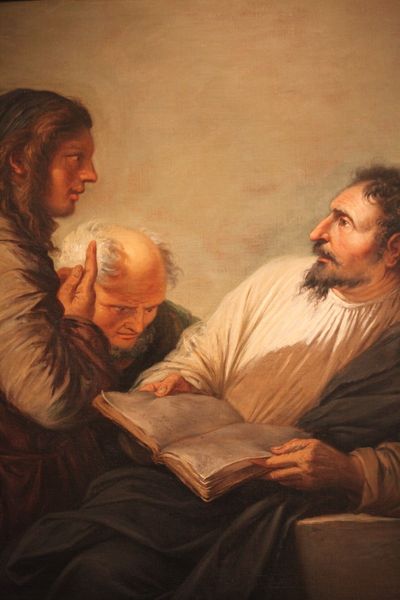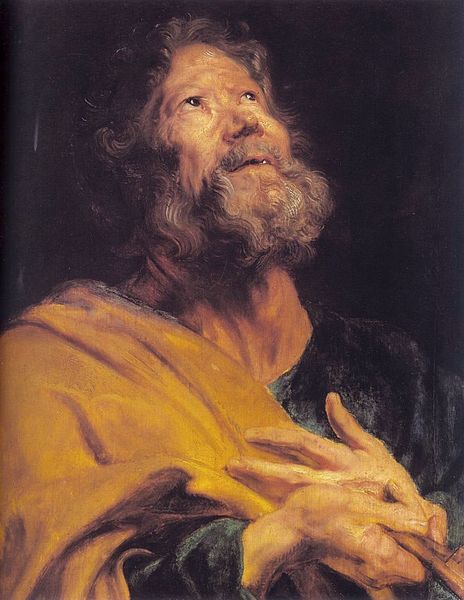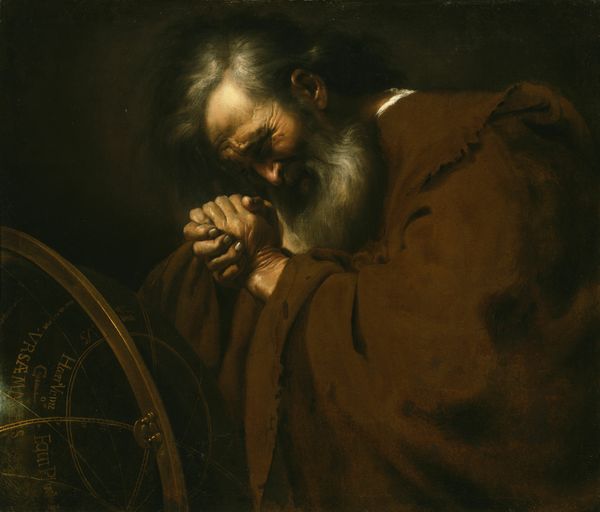
painting, oil-paint
#
portrait
#
baroque
#
portrait
#
painting
#
oil-paint
#
history-painting
#
realism
Copyright: Public domain
Curator: Standing before us is "The Repentance of Saint Peter," a moving oil on canvas created around 1630 by Johannes Moreelse. Editor: The stark lighting immediately grabs you, doesn’t it? It's dramatic, focusing intently on Saint Peter's face and hands. You can almost feel the weight of his regret. Curator: Absolutely. Notice how Moreelse employs a somber palette, almost monochromatic, directing our attention to the emotional core of the piece. The composition, a close-up portrait, intensifies Peter's anguish. Editor: And it makes you consider the actual making of it—the layering of pigment, the almost palpable texture. What supports were available to Moreelse? Who prepared the colors and medium, and from where? Think about the pigments that were ground to capture Peter’s expression of despair! Curator: Those formal decisions enhance the painting’s realism, capturing the human condition so poignantly. The gaze upwards, the clenched hands—these compositional elements are keys to unlocking meaning. There’s a tangible psychological weight here, reinforced by that sharp chiaroscuro. Editor: The act of creation is itself heavy—manual labor and expense that reflects not only Peter’s repentance but the historical moment in which it was created. The price and availability of linen canvas or the precise hue of ultramarine paint say as much as the emotion it evokes. Curator: Interesting. I find that his raking lighting, along with the limited color scale, effectively leads our eye through a specific, directional flow through the piece. Editor: From a material perspective, this act of devotion immortalized through craft provides us insights into economics and piety during Moreelse’s time. The convergence is significant. Curator: I’d say it offers an opportunity to interpret how pictorial arrangement works hand in hand with symbol. Editor: Precisely. Reflecting on this artwork really illuminates how inseparable process is from both intention and reception.
Comments
No comments
Be the first to comment and join the conversation on the ultimate creative platform.
